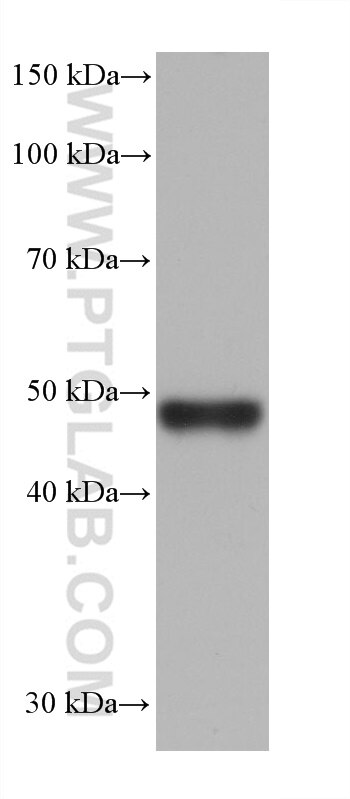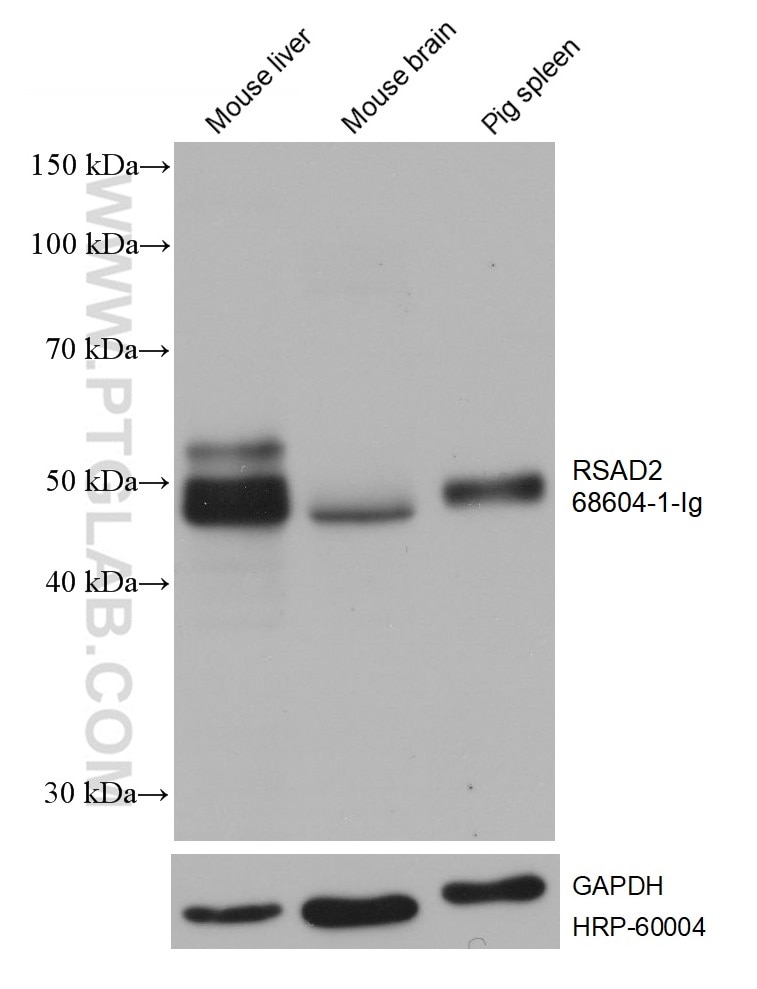Tested Applications
| Positive WB detected in | pig liver tissue, mouse liver tissue, mouse brain tissue, pig spleen tissue |
Recommended dilution
| Application | Dilution |
|---|---|
| Western Blot (WB) | WB : 1:2000-1:10000 |
| It is recommended that this reagent should be titrated in each testing system to obtain optimal results. | |
| Sample-dependent, Check data in validation data gallery. | |
Product Information
68604-1-Ig targets RSAD2 in WB, ELISA applications and shows reactivity with Human, mouse, pig samples.
| Tested Reactivity | Human, mouse, pig |
| Host / Isotype | Mouse / IgG1 |
| Class | Monoclonal |
| Type | Antibody |
| Immunogen | RSAD2 fusion protein Ag27733 Predict reactive species |
| Full Name | radical S-adenosyl methionine domain containing 2 |
| Calculated Molecular Weight | 361 aa, 42 kDa |
| Observed Molecular Weight | 42 kDa |
| GenBank Accession Number | BC017969 |
| Gene Symbol | RSAD2 |
| Gene ID (NCBI) | 91543 |
| RRID | AB_3085300 |
| Conjugate | Unconjugated |
| Form | Liquid |
| Purification Method | Protein G purification |
| UNIPROT ID | Q8WXG1 |
| Storage Buffer | PBS with 0.02% sodium azide and 50% glycerol, pH 7.3. |
| Storage Conditions | Store at -20°C. Stable for one year after shipment. Aliquoting is unnecessary for -20oC storage. 20ul sizes contain 0.1% BSA. |
Background Information
RSAD2 (radical S-adenosyl methionine domain-containing protein 2), also known as CIG5 (cytomegalovirus-induced gene 5 protein), vig1, viperin or CIG33, displays antiviral effect against HIV-1 virus, hepatitis C virus, human cytomegalovirus, and aphaviruses. Expression of the protein can be induced by interferon.
Protocols
| Product Specific Protocols | |
|---|---|
| WB protocol for RSAD2 antibody 68604-1-Ig | Download protocol |
| Standard Protocols | |
|---|---|
| Click here to view our Standard Protocols |





